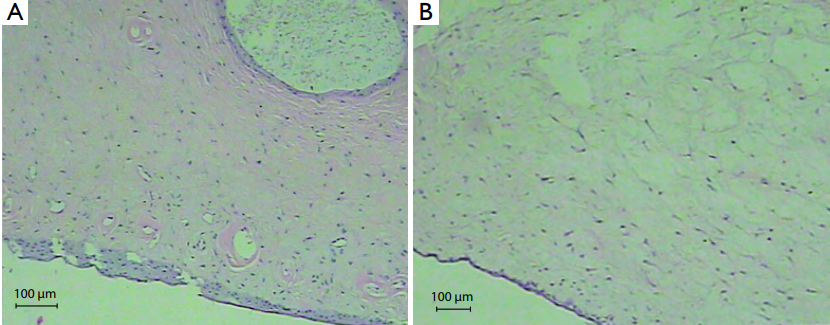A 74-year-old man presented with a three-year history of foreign body sensation in the right eye
after cataract surgery. He underwent uneventful trabeculectomy with mitomycin C (MMC) in the right eye
seven years ago. Slit-lamp examination revealed a large avascular filltration bleb overhanging on the cornea
with a thin base connected to the conjunctiva. Preoperative ultrasound biomicroscopy (UBM) impressions
were confirmed by leakage of aqueous from the incision intraoperatively. Surgical dissection and revision
of the bleb was performed with satisfactory outcome. Histopathologic evaluation showed proliferation of
fibrous tissue under the conjunctival epithelia with irregular cystoids change. The current case may be the
first report of a post-trabeculectomy overhanging filtration bleb related to cataract surgery. The possible
mechanism may be related to microleakage of the surgical wound after phacoemulsiff cation which initiated
the healing and scarring process.






